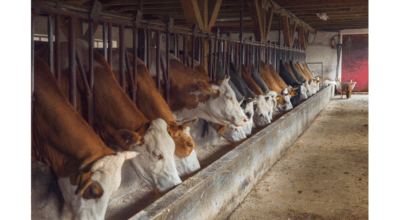Good year for pumpkins
Published 9:51 am Wednesday, October 10, 2012

The demand has been good for pumpkins this year, according to Southampton County Extension Agent Chris Drake. -- SUBMITTED/CHRIS DRAKE
BY STEPHEN H. COWLES/CONTRIBUTING WRITER
Playback58@gmail.com
BOYKINS—Like most of Virginia, Western Tidewater’s 2012 pumpkin crop looks very good.
“The traditional orange jack-o-lantern pumpkins are the biggest I’ve ever seen,” said Kevin Semones with the Virginia Pumpkin Growers Association. “Most of the wholesale pumpkins are gone now from southwest Virginia, the center of the state’s commercial pumpkin industry.”
Closer to home, Neil Drake, owner of Grayson and Emma’s Garden Spot in Courtland, is pleased with the pumpkins he’s harvested.
“I’d say I’ve had a better crop than in the past two years,” Drake said. “Not the best, but not the worst. It’s a little better than the time in 2011.”
Heavy rains came in after pumpkins were harvested and damaged many.
Drake, who lives in Newsoms, has grown 100-pound pumpkins in the past and anticipates some to be 60 to 80 pounds.
“The fall market is a good market for us,” he said. “We sell a lot of pumpkins. They’re a good thing to have out. They draw a little attention, and kids like it. It’s the favorite time of the year for me. So colorful.”
Drake sells some wholesale, but most are for retail.
“Rather than plant all at once, I do it in stages,” he said. “After Halloween, I’m pretty much done.”
Jason Francis and his father, Glen, devote much of their acreage outside Boykins to cotton. A few years ago, they diversified.
“This season will be my fourth growing pumpkins,” Jason Francis said. “I had a little bit of land, and figured I’d try the pumpkins. I’ve had steady progress year after year, and it’s put me where I’m at.”
This year he’s up to five acres, up from the three in 2011.
“I had to have a little more due to rotation,” Francis said. “I would say the harvest is 75 percent complete. They’re is still a lot that are green. If only weather conditions would improve to turn the color. That puts a halt on it.”
Aside from slowing the maturity of the pumpkins, the rain of late also endangers the crop.
“There has been a lot of disease because it’s so wet this year. Disease really affected the crop,” he said. “If I didn’t keep them sprayed, disease would take over. You got to spray every 7 to 10 days. Powdery mildew’s the main thing, and a bit of downy mildew. These two play a main factor.”
In addition to working as an extension agent in Southampton Count, Chris Drake grows seven acres of pumpkins.
“Speaking for myself, I have had an above average fruit set thus far and have harvested 80 percent of my marketable pumpkins,” Drake said. “I had to harvest early and store them in a cool, dry warehouse to prevent the pumpkins from developing white mold caused by a soil-borne fungus. It was very wet early in September and I had to take preventative measures to save my pumpkins.
Since mid-September, conditions have been somewhat drier allowing for the fruit to sit on the ground without as much concern for rotting, he said. Once the mold infects a small spot on the underbelly of the fruit it is basically worthless because it will continue to decline and rot from there on out.
“I and other growers have had to use a very intense, high-cost fungicide spray program to ward of fungal diseases that can devastate a pumpkin crop very rapidly,” Drake said.
August was a slight bit cooler than past years, allowing for a good fruit set, he said.
“That is our biggest problem in southeast Virginia, our climate is simply too hot and humid for optimal fruit set and pollination of most pumpkin varieties,” Drake said.
“More pumpkins are grown in the mountainous areas of the state due to less humidity and more favorable cool nighttime temperatures.”





